The Big Picture (2010 version)
Posted on 24 September 2010 by dana1981
Note: this is the initial version of our Big Picture article published in 2010. As part of our Rebuttal Update Project, the article has been updated and republished with more current data in February 2023. You can access the current version here.
Oftentimes we get bogged down discussing one of the many pieces of evidence behind man-made global warming, and in the process we can't see the forest for the trees. It's important to every so often take a step back and see how all of those trees comprise the forest as a whole. Skeptical Science provides an invaluable resource for examining each individual piece of climate evidence, so let's make use of these individual pieces to see how they form the big picture.
The Earth is Warming
We know the planet is warming from surface temperature stations and satellites measuring the temperature of the Earth's surface and lower atmosphere. We also have various tools which have measured the warming of the Earth's oceans. Satellites have measured an energy imbalance at the top of the Earth's atmosphere. Glaciers, sea ice, and ice sheets are all receding. Sea levels are rising. Spring is arriving sooner each year. There's simply no doubt - the planet is warming (Figure 1).
Figure 1: Indicators of a warming world
Global Warming Continues
And yes, the warming is continuing. The 2000s were hotter than the 1990s, which were hotter than the 1980s, which were hotter than the 1970s. 2010 tied for the hottest year on record. The 12-month running average global temperature broke the record three times in 2010, according to NASA Goddard Institute for Space Studies (GISS) data. Sea levels are still rising, ice is still receding, spring is still coming earlier, there's still a planetary energy imbalance, etc. etc.
Contrary to what some would like us to believe, the planet has not magically stopped warming. Those who argue otherwise are confusing short-term noise with long-term global warming (Figure 2).
Figure 2: The data (green) are the average of the NASA GISS, NOAA NCDC, and HadCRUT4 monthly global surface temperature anomaly datasets from January 1970 through November 2012, with linear trends for the short time periods Jan 1970 to Oct 1977, Apr 1977 to Dec 1986, Sep 1987 to Nov 1996, Jun 1997 to Dec 2002, and Nov 2002 to Nov 2012 (blue), and also showing the far more reliable linear trend for the full time period (red).
Foster and Rahmstorf (2011) showed that when we filter out the short-term effects of the sun, volcanoes, and El Niño cycles, the underlying man-made global warming trend becomes even more clear (Figure 3).
Figure 3: Temperature data (with a 12-month running average) before and after the short-term factor removal
For as much as atmospheric temperatures are rising, the amount of energy being absorbed by the planet is even more striking when one looks into the deep oceans and the change in the global heat content (Figure 4).
Figure 4: Total global heat content. Data from Nuccitelli et al. (2012)
Over 90% of global warming goes into heating the oceans. When taking the heating of the entire climate system into account, the planet has warmed at a rate equivalent to 4 Hiroshima atomic bomb detonations per second over the past 15 years.
Humans are Increasing Atmospheric Greenhouse Gases
The amount of greenhouse gases in the atmosphere - particularly carbon dioxide (CO2) - has been rising steadily over the past 150 years. There are a number of lines of evidence which clearly demonstrate that this increase is due to human activities, primarily burning fossil fuels.
The most direct of evidence involves simple accounting. Humans are currently emitting approximately 30 billion tons of CO2 per year, and the amount in the atmosphere is increasing by about 15 billion tons per year. Our emissions have to go somewhere - half goes into the atmosphere, while the other half is absorbed by the oceans (which is causing another major problem - ocean acidification).
We also know the atmospheric increase is from burning fossil fuels because of the isotopic signature of the carbon in the atmosphere. Carbon comes in three different isotopes, and plants have a preference for the lighter isotopes. So if the fraction of lighter carbon isotopes in the atmosphere is increasing, we know the increase is due to burning plants and fossil fuels, and that is what scientists observe.
The fact that humans are responsible for the increase in atmospheric CO2 is settled science. The evidence is clear-cut.
Human Greenhouse Gases are Causing Global Warming
There is overwhelming evidence that humans are the dominant cause of the recent global warming, mainly due to our greenhouse gas emissions. Based on fundamental physics and math, we can quantify the amount of warming human activity is causing, and verify that we're responsible for essentially all of the global warming over the past 3 decades. The aforementioned Foster and Rahmstorf (2011) found a 0.16°C per decade warming trend since 1979 after filtering out the short-term noise.
In fact we expect human greenhouse gas emissions to cause more warming than we've thus far seen, due to the thermal inertia of the oceans (the time it takes to heat them). Human aerosol emissions are also offsetting a significant amount of the warming by causing global dimming. Huber and Knutti (2011) found that human greenhouse gas emissions have caused 66% more global warming than has been observed since the 1950s, because the cooling effect of human aerosol emissions have offset about 44% of that warming. They found that overall, human effects are responsible for approximately 100% of the observed global warming over the past 60 years (Figure 5).
Figure 5: Contributions of individual forcing agents to the total change in the decadal average temperature for three time periods. Error bars denote the 5–95% uncertainty range. The grey shading shows the estimated 5–95% range for internal variability based on the CMIP3 climate models. Observations are shown as dashed lines.
There are also numerous 'fingerprints' which we would expect to see from an increased greenhouse effect (i.e. more warming at night, at higher latitudes, upper atmosphere cooling) that we have indeed observed (Figure 6).
Figure 6: Observed 'fingperprints' of man-made global warming
Climate models have projected the ensuing global warming to a high level of accuracy, verifying that we have a good understanding of the fundamental physics behind climate change.
Sometimes people ask "what would it take to falsify the man-made global warming theory?". Well, basically it would require that our fundamental understanding of physics be wrong, because that's what the theory is based on. This fundamental physics has been scrutinized through scientific experiments for decades to centuries.
The Warming will Continue
We also know that if we continue to emit large amounts of greenhouse gases, the planet will continue to warm. We know that the climate sensitivity to a doubling of atmospheric CO2 from the pre-industrial level of 280 parts per million by volume (ppmv) to 560 ppmv (we're currently at 390 ppmv) will cause 2–4.5°C of warming. And we're headed for 560 ppmv in the mid-to-late 21st century if we continue business-as-usual emissions.
The precise sensitivity of the climate to increasing CO2 is still fairly uncertain: 2–4.5°C is a fairly wide range of likely values. However, even if we're lucky and the climate sensitivity is just 2°C for doubled atmospheric CO2, if we continue on our current emissions path, we will commit ourselves to that amount of warming (2°C above pre-industrial levels) within the next 75 years.
The Net Result will be Bad
There will be some positive results of this continued warming. For example, an open Northwest Passage, enhanced growth for some plants and improved agriculture at high latitudes (though this will require use of more fertilizers), etc. However, the negatives will almost certainly outweigh the positives, by a long shot. We're talking decreased biodiversity, water shortages, increasing heat waves (both in frequency and intensity), decreased crop yields due to these impacts, damage to infrastructure, displacement of millions of people, etc.
Arguments to the contrary are superficial
One thing I've found in reading skeptic criticisms of climate science is that they're consistently superficial. For example, the criticisms of James Hansen's 1988 global warming projections never go beyond "he was wrong," when in reality it's important to evaluate what caused the discrepancy between his projections and actual climate changes, and what we can learn from this. And those who argue that "it's the Sun" fail to comprehend that we understand the major mechanisms by which the Sun influences the global climate, and that they cannot explain the current global warming trend. And those who argue "it's just a natural cycle" can never seem to identify exactly which natural cycle can explain the current warming, nor can they explain how our understanding of the fundamental climate physics is wrong.
There are legitimate unresolved questions
Much ado is made out of the expression "the science is settled." The science is settled in terms of knowing that the planet is warming rapidly, and that humans are the dominant cause.
There are certainly unresolved issues. As noted above, there's a big difference between a 2°C and a 4.5°C warming for a doubling of atmospheric CO2, and it's an important question to resolve, because we need to know how fast the planet will warm in order to know how fast we need to reduce our greenhouse gas emissions. There are significant uncertainties in some feedbacks which play into this question. For example, will clouds act as a net positive feedback (by trapping more heat, causing more warming) or negative feedback (by reflecting more sunlight, causing a cooling effect) as the planet continues to warm? And exactly how much global warming is being offset by human aerosol emissions?
These are the sorts of questions we should be debating, and the issues that many climate scientists are investigating. Unfortunately there is a very vocal contingent of people determined to continue arguing the resolved questions for which the science has already been settled. And when climate scientists are forced to respond to the constant propagation of misinformation on these settled issues, it just detracts from our investigation of the legitimate, unresolved, important questions.
Smart Risk Management Means Taking Action
People are usually very conservative when it comes to risk management. Some of us buy fire insurance for our homes when the risk of a house fire is less than 1%, for example. When it comes to important objects like cars and homes, we would rather be safe than sorry.
But there is arguably no more important object than the global climate. We rely on the climate for our basic requirements, like having enough accessible food and water. Prudent risk management in this case is clear. The scientific evidence discussed above shows indisputably that there is a risk that we are headed towards very harmful climate change. There are uncertainties as to how harmful the consequences will be, but uncertainty is not a valid reason for inaction. There's very high uncertainty whether I'll ever be in a car accident, but it would be foolish of me not to prepare for that possibility by purchasing auto insurance. Moreover, uncertainty cuts both ways, and it's just as likely that the consequences will be worse than we expect as it is that the consequences won't be very bad.
We Can Solve the Problem
The good news is that we have the tools we need to mitigate the risk posed by climate change. A number of plans have been put forth to achieve the necessary greenhouse gas emissions cuts (i.e. here and here and here). We already have all the technology we need.
Opponents often argue that mitigating global warming will hurt the economy, but the opposite is true. Those who argue that reducing emissions will be too expensive ignore the costs of climate change - economic studies have consistently shown that mitigation is several times less costly than trying to adapt to climate change (Figure 7).
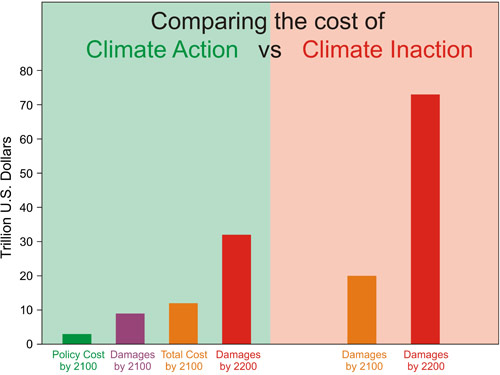
Figure 7: Approximate costs of climate action (green) and inaction (red) in 2100 and 2200. Sources: German Institute for Economic Research and Watkiss et al. 2005
This is why there is a consensus among economists with expertise in climate that we should put a price on carbon emissions (Figure 8).
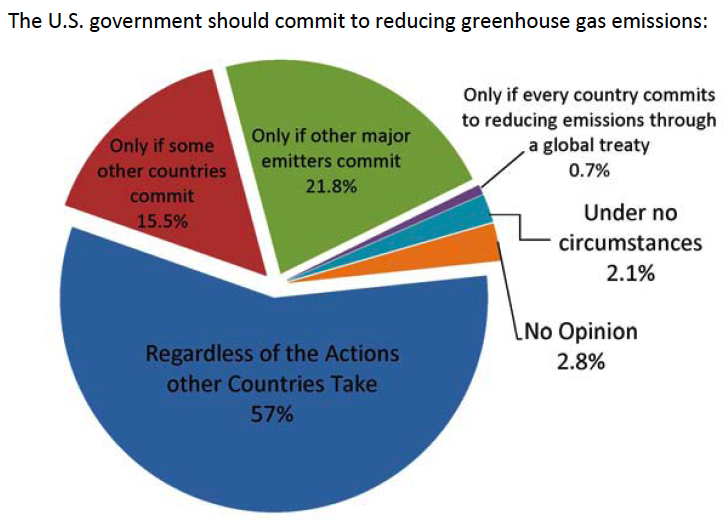
Figure 8: New York University survey results of economists with climate expertise when asked under what circumstances the USA should reduce its emissions
The Big Picture
The big picture is that we know the planet is warming, humans are causing it, there is a substantial risk to continuing on our current path, but we don't know exactly how large the risk is. However, uncertainty regarding the magnitude of the risk is not an excuse to ignore it. We also know that if we continue on a business-as-usual path, the risk of catastrophic consequences is very high. In fact, the larger the uncertainty, the greater the potential for the exceptionally high risk scenario to become reality. We need to continue to decrease the uncertainty, but it's also critical to acknowledge what we know and what questions have been resolved, and that taking no action is not an option. Th good news is that we know how to solve the problem, and that doing so will minimize the impact not only on the climate, but also on the economy.
The bottom line is that from every perspective - scientific, risk management, economic, etc. - there is no reason not to immeditately take serious action to mitigate climate change, and failing to do so would be exceptionally foolish.































 Arguments
Arguments
























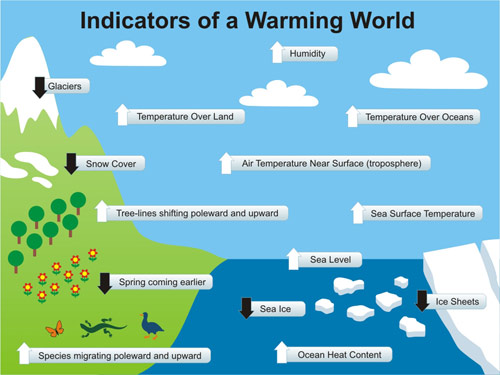
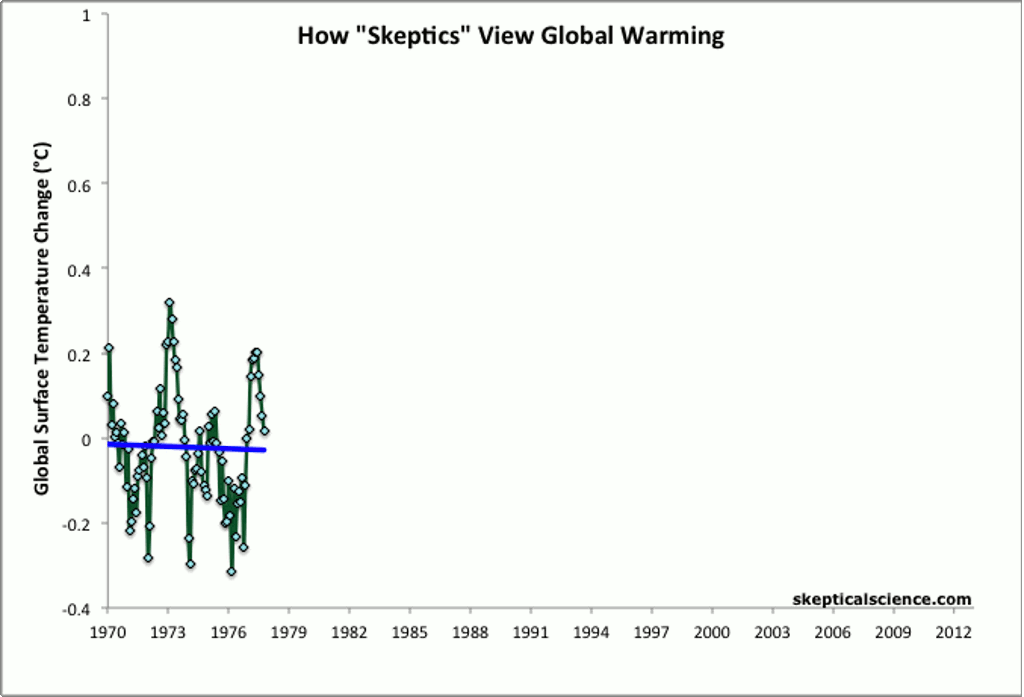
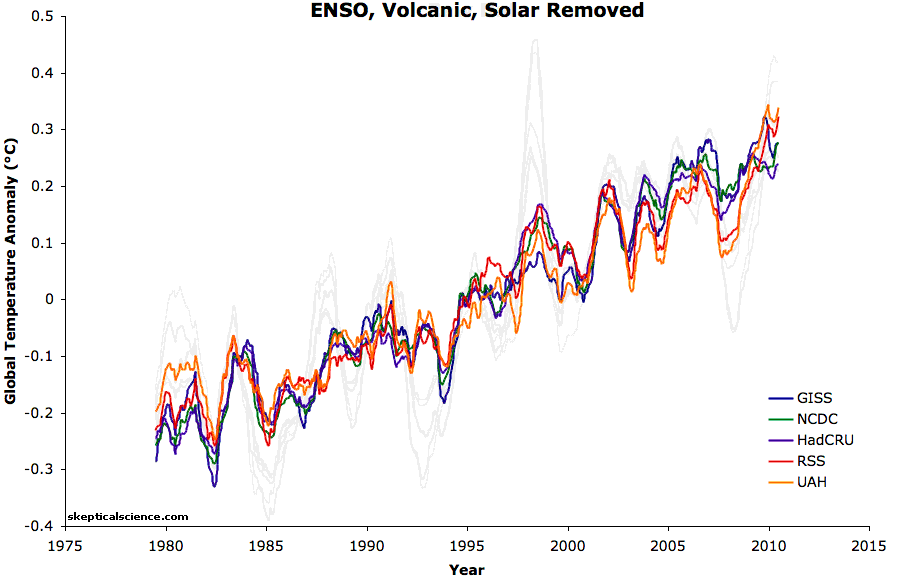
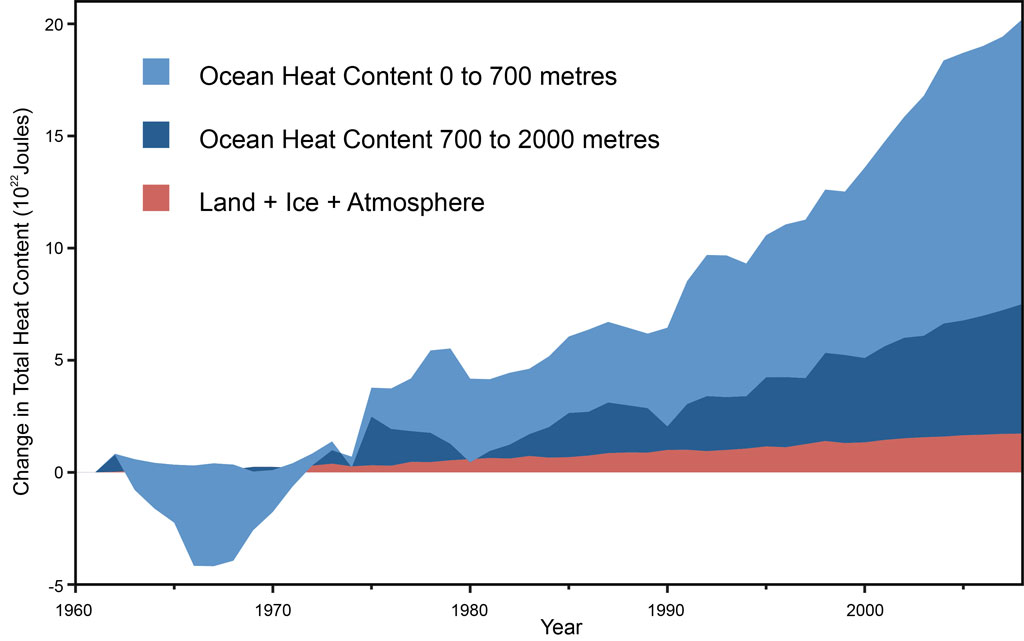

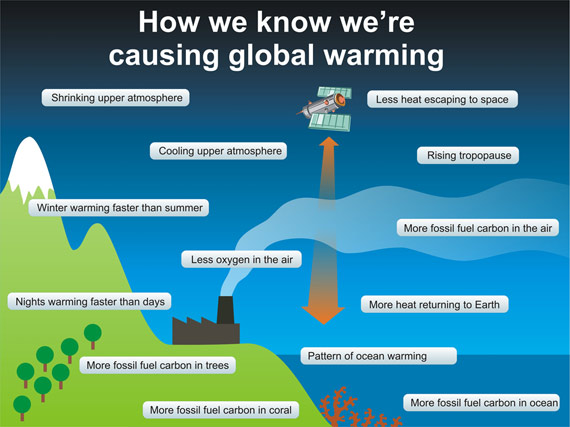









A small complaint about the discussion of the first figure:
If you click on the first figure it takes you to a discussion of that figure. That discussion states that "satellite measurements of energy imbalance (the difference between incoming and outgoing energy at the top of the atmosphere)," tell us about the energy imbalance. This is not correct. The discrepancies between the satellites are on the order of 6 w/m2 and the imbalance is about 1 w/m2. A key problem is that the measurement of the imbalance requires that the satellite be everywhere all at once and it can not. So the accuracy required is unobtainable. The estimates of the imbalance come from the measurement of the rate of increase in the heat stored in the oceans. (eg Keihl and Tremberth)
Chuck Wilson
Golden, CO, USA
The uncertainty priniciple underpins everything including attacks on climate science...
James C Wilson - You're quite correct that the satellite offset discrepencies are larger than the imbalance derived from ocean heat content. However, the observed spectral changes (Harries et al 2001 and later works) are entirely consistent with about 1 w/m2, and empirically support the radiative models that also give that imbalance value. So it's not without reason to include the satellite measures as consilient evidence.
Energy Theory for Global Warming
I should like to offer an alternative theory to explain global warming.
Please visit my post at https://wordpress.com/post/hotgas.club/50
I should like to receive your comments here.
AEBanner
[DB] Even after a mandatory login with Google, your site would not load. Unless you have observational evidence to support it, your conjecture does not rise to the level of a theory.
New thoughts about the cause of global warming
To the Moderator
I'm sorry you have had difficulty accessing my post on wordpress. I have again tried the following link, via Google, and it loaded without any trouble at all.
https://wordpress.com/post/hotgas.club/50
I agree that is somewhat pretentious to call my idea a theory, so I have re-phrased it simply to be "new thoughts". Clearly, I cannot cite previous work because, as far as I know, this is original. However, the figures on which the work is entirely based come directly from the BP Statistical database, as qouted in my post.
I really should be grateful for a critical review of what I have written.
I cant see anything either. Doesnt matter whether I login to wordpress or google, I see nothing. You arent going to get any traction unless you put it on public site. It is likely you can see it because you are are owner and it believes you to be logged in. Trying opening it with a different browser from the one you log into it with. I suspect you also need to change the visibility settings for your blog.
Anthropogenic energy could be causing global warming
AEBanner
The sum total of all the primary energy used since 1966 is enough to explain the measured warming of the Earth's atmosphere. Energy data was taken from the BP website.
I have corrected the link to my post on wordpress, as below.
https://wordpress.com/read/blogs/154908990/posts/50
I should be very pleased to receive constructive comments here.
AEBanner @207 ,
on my back-of-envelope calculations :-
Earth surface area : 510 million sq. Km
multiply by +2 watts/squ. meter (of solar-origin greenhouse) imbalance
= 1020 Terawatt-years of warming.
The ubiquitous Wikipedia shows humans' energy consumption about 20 Terawatt-years. (You could probably add slightly to that, to allow for an inefficiency fudge factor . . . but then you probably ought to subtract hydro power and a tiny amount for solar power etc.)
So ~ human "industrial" heat production would be roughly 50x smaller than the additional warming "from AGW".
AGW effect was less than 1 watt/squ.m. say fifty years ago . . . but human industrial power was also much less, then, too.
Overall, your energy idea seems dead in the water. ( Barring an embarrassing error on my envelope! )
Apologies ~ that should have been Terawatt-years annually
. . . or just plain Terawatts, of course.
If you look up 2017 Primary Energy Use from the table on page 8 of the BP 2018 Review of World Energy (13,551 million TOE or 157,000 TWh or 17.9TW or 0.035Wm^2) it comes out below 20TW.
As this SkS graphic (perhaps a little out-of-date now) shows (from this thread), Primary Energy Use is tiny on a global scale.
Thank you MA Rodger and Eclectic for your comments, but I am afraid that you have both completely missed the point I am making.
Firstly, though, my data came from the very data set you refer to, MA Rodger; namely the BP dataset, although the one I used went much further back. I took the figures each year from 1966 to 2016 inclusive.
You both seem to think along the lines of Watts per sq.metre, which is not my approach in my work.
I simply deal with the amount of primary energy, in Joules, consumed in total over the 50 years period from 1966 to 2016 inclusive. I added up the annual figures provided by the BP Statistical Review, as mentioned in my “paper”, but separately for the two hemispheres. It is these total amounts that I am using, not these values worked in reverse to get Watts per square metre.
The total amounts of energy as calculated in my work must go, initially, into the atmosphere because that is where it starts. From there the energy is distributed into the oceans, the continents and so on, but some remains in the atmosphere. This is illustrated very well in the IPCC report
https://www.ipcc.ch/site/assets/uploads/2018/02/ar4-wg1-chapter5-1.pdf
and scroll to 5.2.2.3 Note that this data only goes up to 2003. We find that the energy entering the oceans was 89.3% of the total anthropogenic energy, and the energy remaining in the atmosphere was 3.14%, this latter figure being subject an error of +or – 40%. This means that the proportion of the total anthropogenic energy remaining in the atmosphere was between 1.89% and 4.40% of the total. The I have subsequently used the value 3.14%.
Please note that the number of joules entering the atmosphere was attributed to Kevin Trenberth.
The resulting kinetic theory then provides the temperature increase in the atmosphere, as calculated.
A careful reading of my wordpress post
https://wordpress.com/read/blogs/154908990/posts/50
makes all this very clear, and you will see that excellent results are obtained.
AEBanner @211 ,
sorry, your calculation is not even close (nor do you get even a small cigar! ).
Nor can you say that an accumulation of joules, ergs, watts, Terawatt-years (or BTU per minute) from human-caused oxidation, can be magically limited to only the thin gasseous part of our planet.
Everything is connected over time. The planetary air is pressed up against 300+ million square kilometres of cool ocean . . . and so the "careful sequestration" that you wish for, is simply impossible.
AEBanner, your idea is far from new. It's all been looked into & assessed ~ years ago.
AEBanner @211 ,
As others have pointed out, your approach has serveral fundamental flaws, but I think conceptually your biggest flaw is in forgetting the radiative factor back into space.
You can't just accumulate all the energy accumulated between 1966 to 2016, because most of that energy radiates right back into space. Just like most the suns energy radiates right back into space.
The only thing that matters is the net. This means what matters is the greenhouse gasses. And now we are right back at CO2
Energy can cause Global Warming
RedBaron @ 213
Thank you for your comments.
You claim that most of the anthropogenic energy is radiated back into space.
But how do you think that happens? The anthropogenic energy is caused by burning fuels, and so liberates sensible heat, that is increased kinetic energy of the molecules in the atmosphere. This is not radiant energy, and so cannot be radiated away. In any case, nitrogen and oxygen molecules do not radiate.
You also claim that energy cannot be accumulated in the Earth's system. I refer you back to the IPCC report I gave in my post on wordpress
https://wordpress.com/read/blogs/154908990/posts/50
which shows that the total change in Energy Heat Content from 1961 to 2003, from all sources, was 15.9*10^22 Joules. This is indeed a store of energy.
I should be grateful if you would please let me know the other fundamental flaws you claim I have made.
AEBanner @214,
If the atmosphere were solely composed of N2 & O2, it would be correct to state that such an atmosphere does not radiate IR. Note that it would happily radiate at shorter wavelengths.
And if the atmosphere (complete with H2O, CO2 etc) were heated to contain more energy, the N2 & O2 will be bashing into H2O, CO2 etc more vigorously. That will result in the H2O, CO2 etc radiating more IR and so at the top of the atmosphere that increase in IR will be an increased energy loss to space. So unless you have a mechanism to stop that increased energy loss or an energy flux to keep the atmospheric energy levels topped up, the temperature increase will die away back to a temperature that can be maintained.
You are, however ignoring that fundamental problem with your grand theory and reference IPCC AR4 Fig 5.4 which shows the increased energy content for different parts of the world system for the periods 1961-2003 (blue) and 1993-2003 (burgundy).
IPCC AR4 Fig 5.4
To provide the 159Zj total change over the period 1961-2003=42 years, that would require an input of 3.8Zj/year or a global warming of 0.24Wm^-2. (This would be 0.55Wm^-2 to provide the 89Zj over the shorter period 1993-2003.)
Yet we have established that the energy from anthropogenic FF-use & nuclear power generation in 2017 is only 0.03Wm^-2. It would be significantly less in earlier years.
So even without the increased energy flux lost to space by the warmed atmosphere, your grand theor cannot account for the accumulated energy within the global system.
Simply put, it don't add up.
Energy can cause Global Warming
MA Rodger @215
Thank you yet again for an interesting post, and particularly for including Fig 5.4 from the IPCC report. Your comments about the values in this diagram are absolutely correct. I erroneously attributed them to anthropogenic energy, and I apologise for this mistake. I have corrected the mistake in my blog.
However, from this figure it was possible to obtain a value for the proportion of the total energy in the Earth’s system which was in the atmosphere as it was in 2003. This was 3.14%, and this was the value I used subsequently.
Nevertheless, this mistake does not in any way affect the calculations in my blog, because my data is from the BP dataset.
Now, about the question of radiation from the atmosphere. You agree that nitrogen and oxygen do not radiate, so for any loss of energy stored in the atmosphere, it would have to come via the greenhouse gases. This could only happen by emission of infrared photons from the excited states of these gases.
But, the excited states are quantised; they have well-defined energy levels, and so the emission of photons is also quantised, as the molecule decays from one excited state to the lower one. You cannot have emission of only a fraction of a photon.
The energy of a photon, and therefore of the energy level difference in the excited states in the molecule, is dependent on the frequency of the electromagnetic radiation. Consider the 15 micron emission from carbon dioxide. The photon energy is given by the equation Energy = h*f where h is Planck’s Constant = 6.63*10^-34 Joule seconds, and f is the frequency. It follows from the velocity of light that f=2*10^13 Hz. Hence, the energy of a 15 micron photon is 1.326*10^-20 Joules.
Let us now compare this with the kinetic energy of a molecule in the atmosphere with an Absolute temperature T. By the kinetic theory, the energy of the molecule is given by: Energy = (3/2)* k *T Joules, where k is the Boltzmann Constant 1.38*10^-23 J/K. This gives the equation for the kinetic energy E = 2.07*(10-23)*T Joules. So at atmospheric temperature of 288 K, the energy = 5.96*10-21 Joules.
This is significantly less than the photon energy given above, and so a collision, even involving all the kinetic energy, cannot excite a carbon dioxide molecule enough to enable subsequent radiation. Similarly for other GHG’s.
So unless there is some other factor to consider, it would seem that the “Energy” ideas in my blog are still valid.
AEBanner @216,
The IPCC AR4 Fig5.4 shown @215 does indeed show the warming of the atmosphere at 3% of the global total. You say of the global total, the 100%, that you "erroneously attributed them to anthropogenic energy." We agree that there is a lot of energy in this 100% of the global warming 1961-2003. So being so great a quantity of energy should make my question on the subject easy to answer. If the 97% of the warming that didn't end up in the atmosphere didn't result from AGW, what was the cause of it?
And happily your numbers are not inaccurate within your grand theory that CO2 at 288K cannot emit photons at 15 microns because the energy of such a photon is roughly twice the average kinetic energy of a molecule in such a gas. But do remind me - what is the minimum number of gas molecules you require to create a collision? There is further consideration of the statistical profile of molecule velocity and the other means such molecules have of holding energy.
Simply put, to refute the existence of 15 micron IR being radiated by CO2 in the atmosphere is to popishly refute a whole pile of very straightforward physics. The IR can be measured.
AEBanner,
You claim that since waste energy from fossil fuel combustion is heat it cannot be reradiated into space.
Leaving aside the fact that all incoming energy is converted into heat before being reconverted into radiation, can you explain why volcanic energy does not accumulate in the atmosphere like human heat energ ydoes. Since volcanic energy is also all heat, by your claim that heat canot be reradiated it should also accumulate. Since up thread MARodger showed tht volcanic energy is 3-10 times more energy than human heat the volcanic energy should dominate your effect.
Since volcanic heat has been emitted for all eternity, the Earth should be as hot as the sun by now, according to your hypothesis. Obviously the Earth is not as hot as the Sun so the heat energy must also radiate out into space and not accumulate as you claim.
You need to learn about black body radiation which would also explain how CO2 emits radiation at a higher energy than the average molecule (hint: if there is an average than some molecules have more than average energy).
I have responded to AEBanner here on the waste heat thread where I believe this discussion belongs.
As a moderator here, can I ask that all further discussion on AEBanner's notion be done there. It is offtopic on this thread and thus in violation of comments policy.
According to this recent article, "A slightly overall warmer temperature, a mean surface temperature of about 5 degrees Celsius (or about 8 degrees Fahrenheit) greater than Earth, together with the additional moisture, would be also better for life.". So it looks like we need to be warmer. See article here: https://scitechdaily.com/some-planets-may-be-better-for-life-than-earth-researchers-identify-24-superhabitable-exoplanets/
[DB] "So it looks like we need to be warmer"
Your comment more properly belongs on the "It's not bad" thread (spoiler: there you will find that negative impacts of global warming on agriculture, health & environment far outweigh any positives; please read the post and the multiple versions of it, plus the comments on it before placing any additional comments there).
Participants, any responses to this should be placed there, with a redirect stub placed here.
Not worth responding on a more-appropriate thread for a very simple response.
The paper In Schulze-Makuch et al (2020) 'Search for a Planet Better than Earth: Top Contenders for a Superhabitable World' is about finding life so they are considering the ideal world for life, not human life. They consider Earth to be a bit too young, too small (so gravity would be best 50% stronger), too cool and too nitrogen-cloaked and also with a moon too small, all this relative to a planet idea for life.